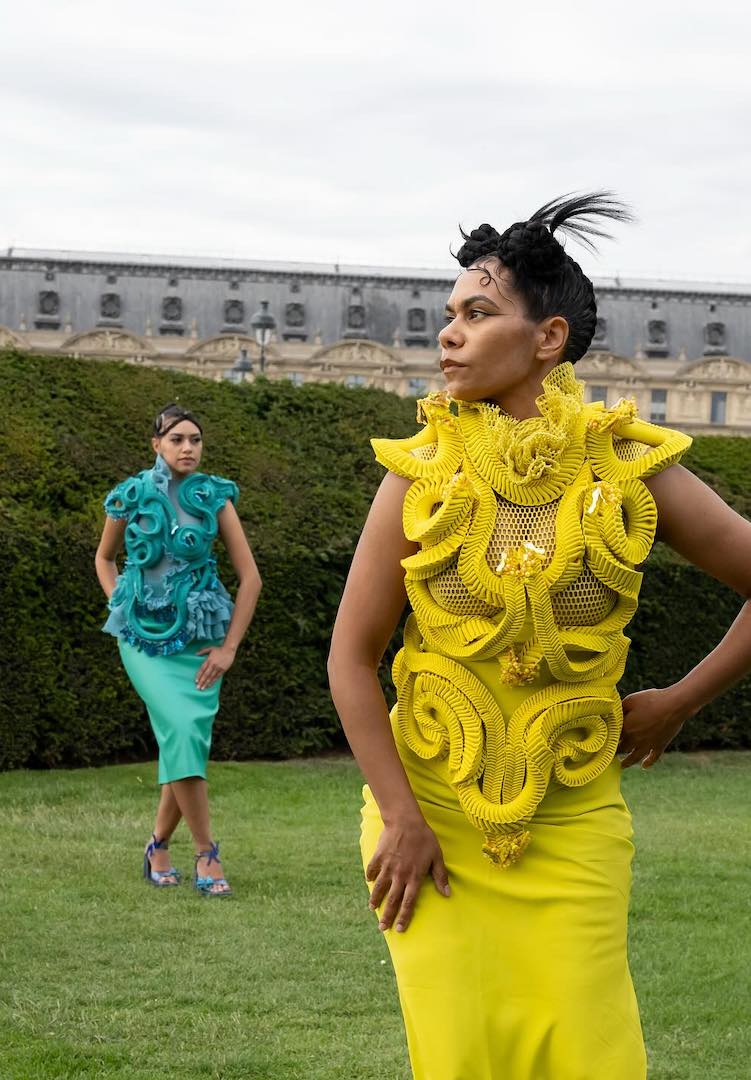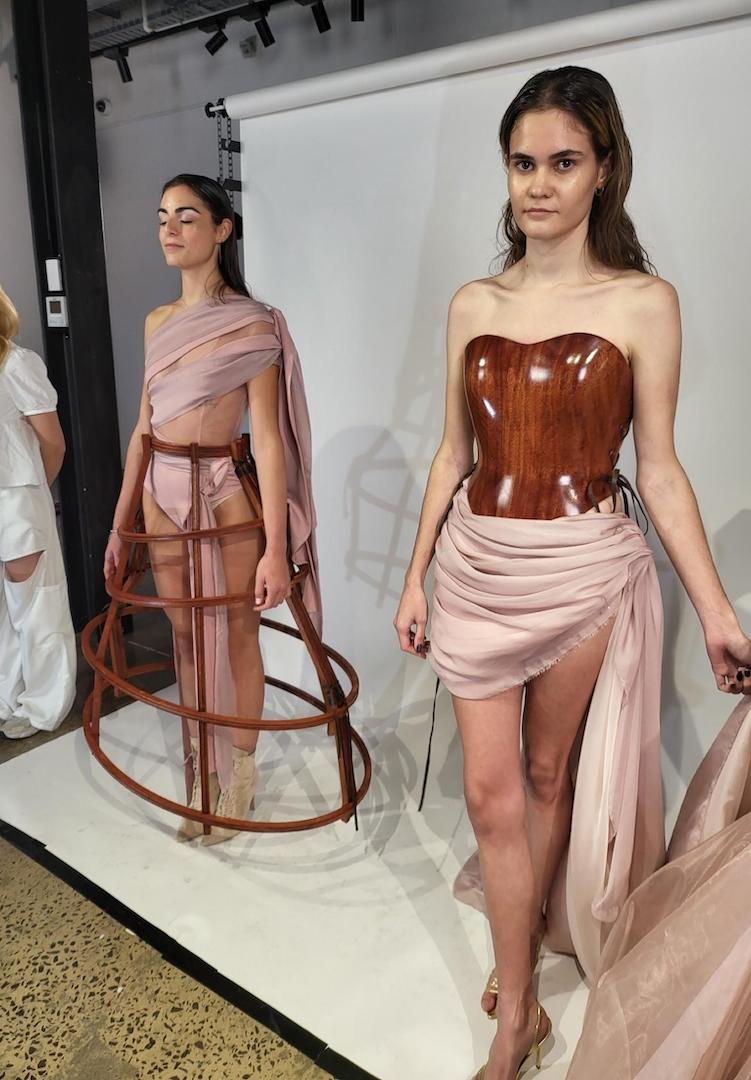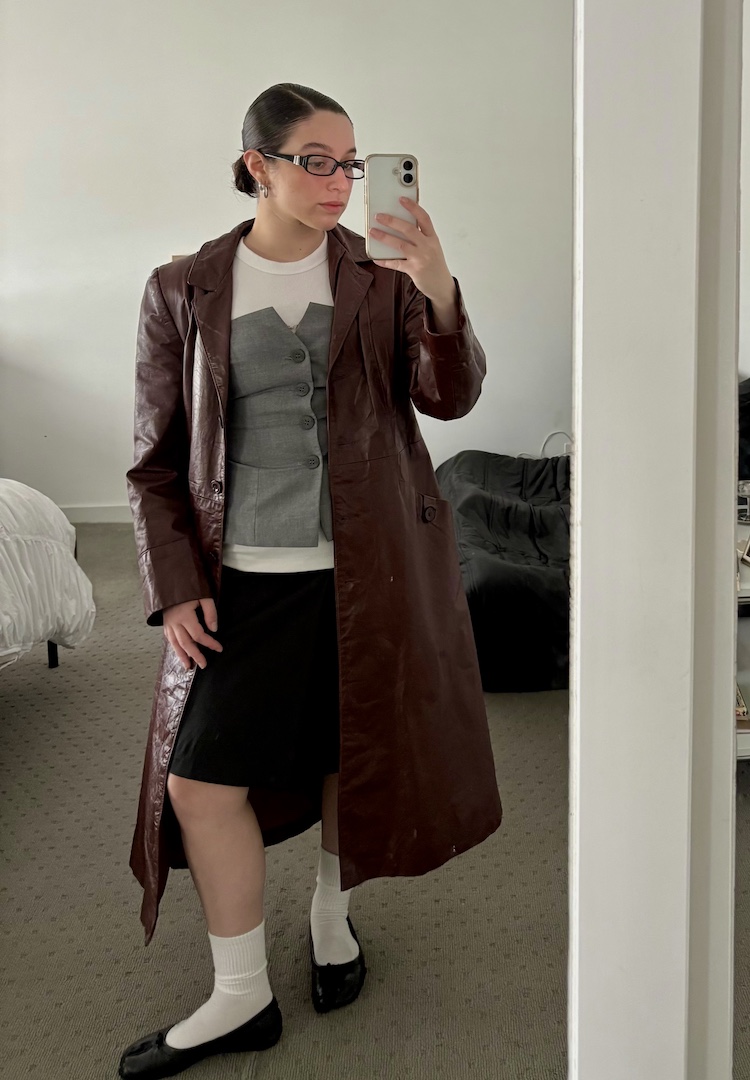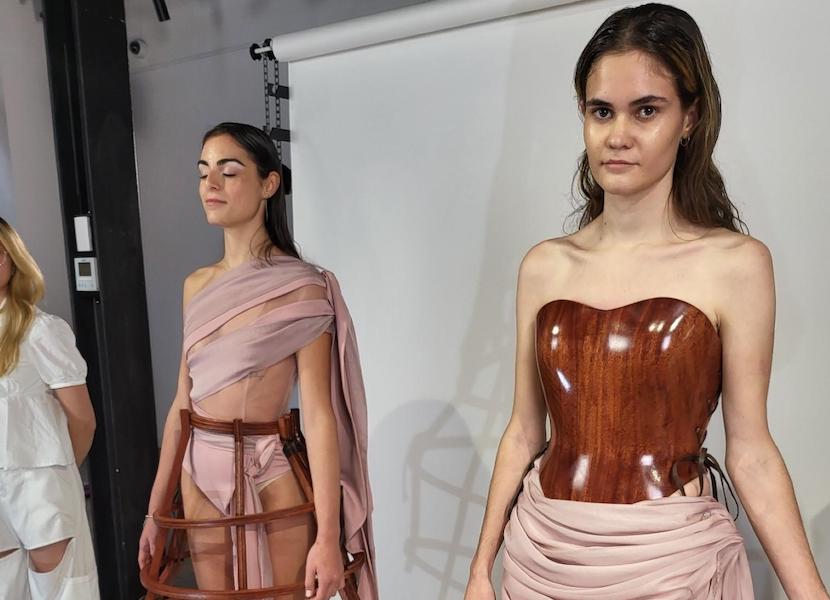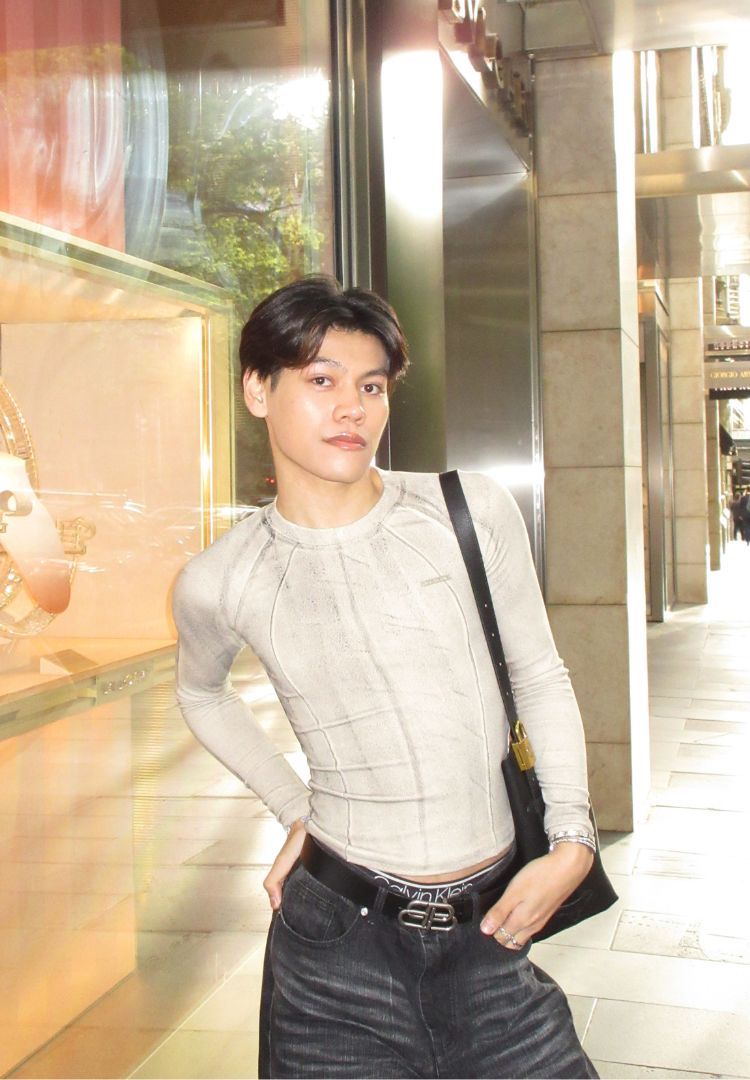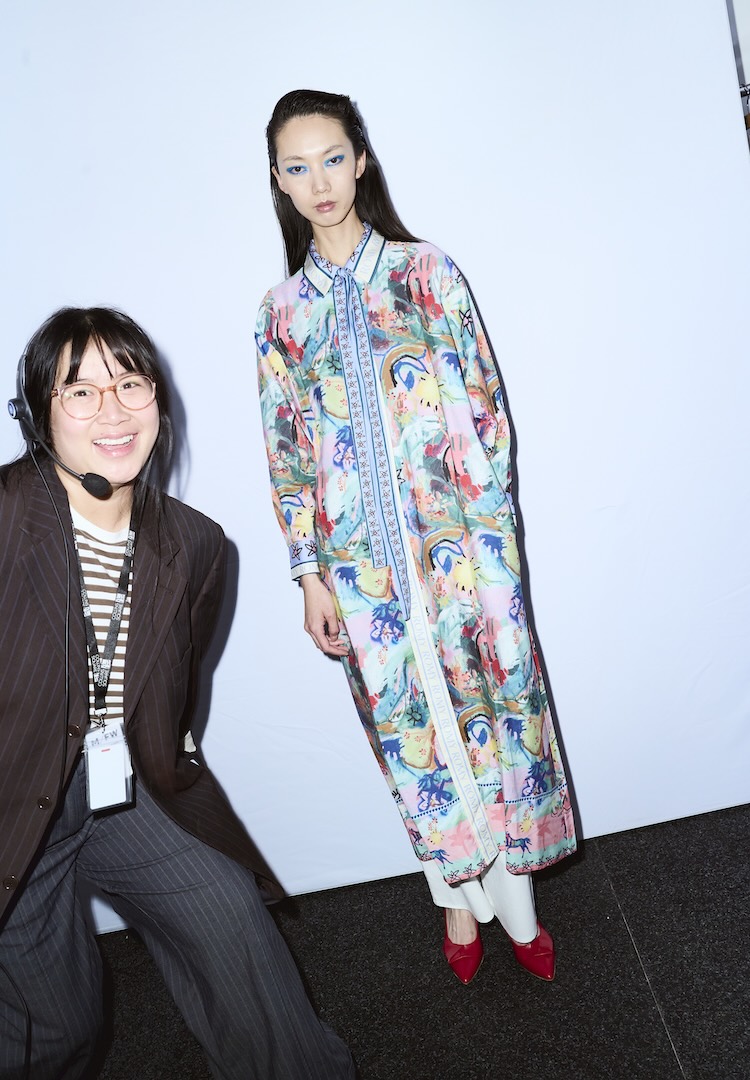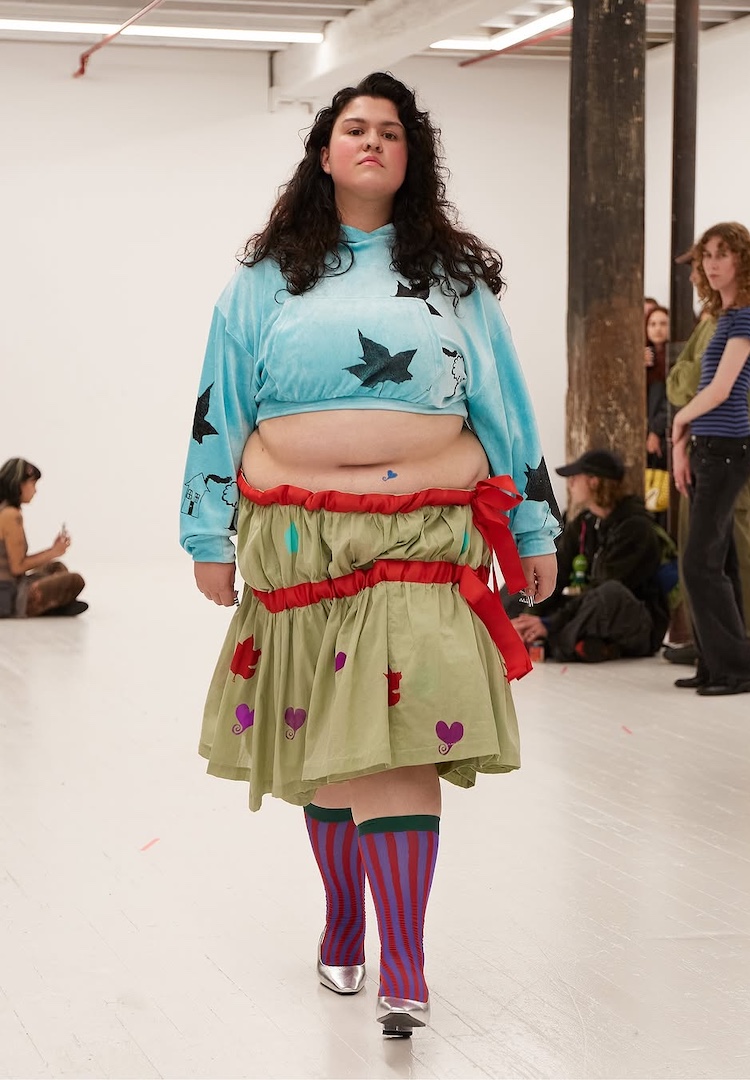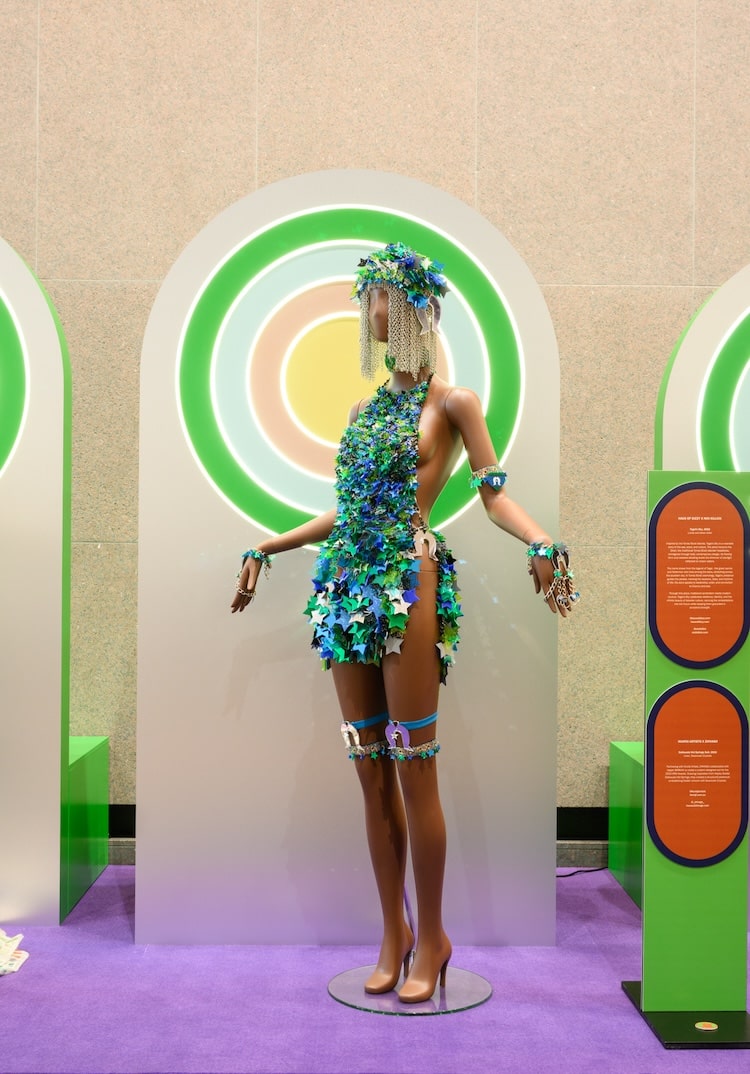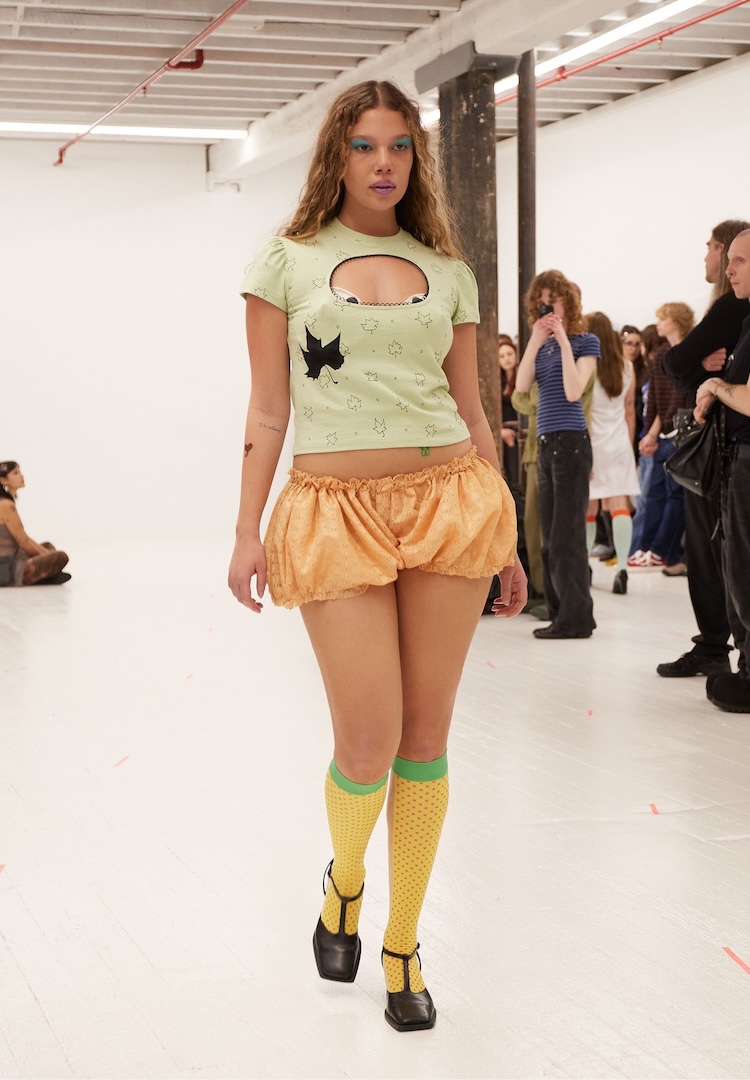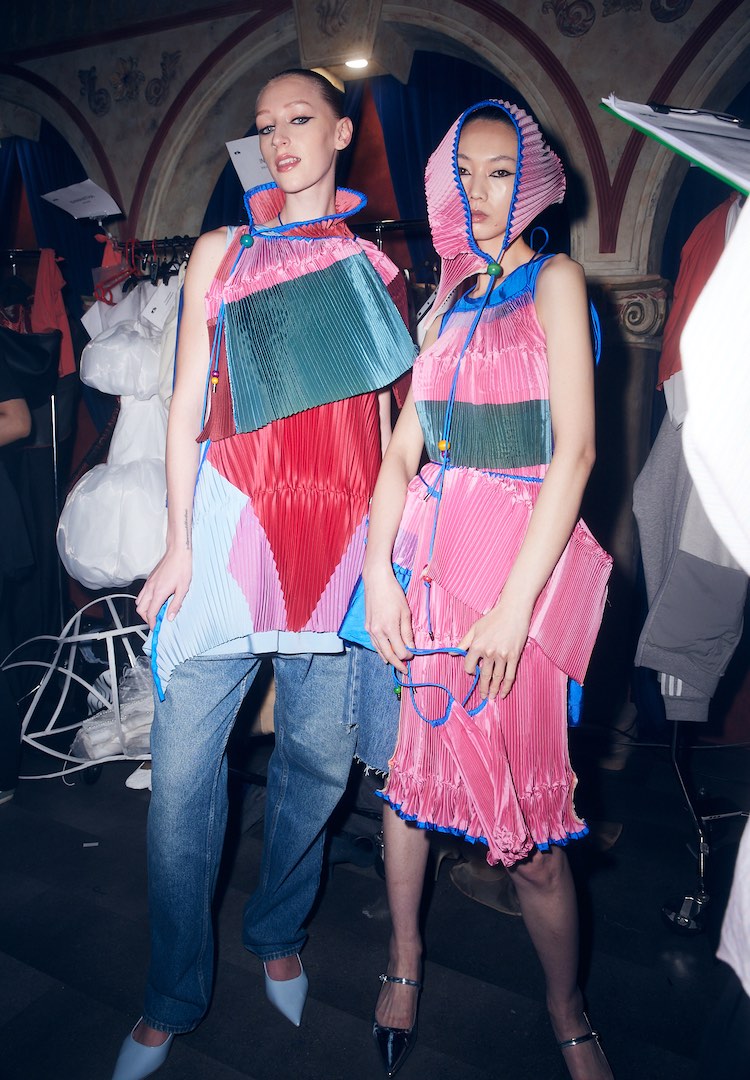Meet the designers behind the M/FW Student Collections Runway
IN PARTNERSHIP WITH LCI MELBOURNE
WORDS BY IZZY WIGHT
“I want people to be blown away by the drama, the scale and the craftsmanship – to experience that ‘wow’ moment where fashion becomes more than clothing.”
While Melbourne Fashion Week (M/FW) attendees meticulously plan their outfits and pack up their portable chargers, fashion students around the city undertake a different level of preparation. Taking place this Friday night, the Student Collections Runway is the moment where months of tireless work – ideating, experimenting, constructing and deconstructing – comes to life.
One of the most-anticipated events in the week’s packed schedule, the annual student showcase is dramatic, dynamic and electrifying: a first-look glimpse into the future of fashion.
For more fashion news, shoots, articles and features, head to our Fashion section.
This year, eight of LCI Melbourne’s Fashion and Costume Design students will make their debut on the runway. From glossy wooden bodices and saccharine tulle skirts, to high-octane, leopard-print gowns (see a preview here), each collection is imbued with palpable emotion and layers of personal storytelling. Ahead, we speak to four of the exhibiting students about how they brought these looks to life.
Rhiannon Todd

Fashion Journal: Can you tell us about the story behind your collection?
Rhiannon: My collection, Elytra, was inspired by beetles and our inner anxieties, and the hidden parts of ourselves. I use the beetles as an allegory… underneath their hard-shelled exterior they contain soft, delicate wings, much like us [when we hide] our inner fragilities under hard fronts.
How would you define your design aesthetic?
Originally, I had my mind set on studying purely costume design. I started with a chaotic mind of ideas and not a lot of refinement… Since coming to LCI Melbourne, I’ve really honed in on my design aesthetic and pushed my abilities and designs further than I ever would have on my own.
What textiles or techniques were key to bringing your vision to life?
Liquid mikado fabric has been key to achieving the bright bold colours I envision in my designs. This structured fabric has also allowed me to do large concertina pleats, creating dynamic shapes and silhouettes in my designs.
Which part of the design process excites you the most?
I love seeing my pieces being worn by people. Seeing a garment on a mannequin just doesn’t compare to getting to see a person light up when they wear my garments. It’s like the final missing piece that brings the designs to life.
Ella Atkins

Can you tell us about the story behind your collection?
I wanted to create something dramatic, show-stopping and even a little controversial. Each look features bold, over-the-top silhouettes inspired by historical couture, merging the past with the future… Round 2: A Fierce Reawakening of Couture is about confidence, defiance and the beauty of owning one’s identity without compromise.
You’re clearly a maximalist. How would you define your design aesthetic, and has it evolved since you started studying fashion?
My design aesthetic is unapologetically maximalist. I’ve always had a love for animal prints, especially leopard print, which to me embodies confidence and power. I believe in a ‘go big or go home’ approach, creating pieces that make a statement and refuse to blend in.
Studying at LCI Melbourne has encouraged me to be more self-expressive and fearless in my creativity. It’s pushed me to take risks, experiment with new techniques and explore ideas that challenge traditional boundaries of fashion.
What textiles or techniques were key to bringing your vision to life?
The key textiles and techniques in my collection were all about bringing depth and drama to each look. Every placement print was originally hand-drawn, then digitally refined to create bold, seamless artwork across the garments. I worked primarily with rich velvet fabrics to enhance the luxurious, couture feel, while incorporating 3D sculptural elements, like the leopard’s head and tail, to add texture, movement and storytelling.
What do you hope audiences take away from your collection?
I hope audiences can see and feel the countless hours of work that went into creating each look. Every detail, print, and silhouette was carefully considered to make a statement. I want people to be blown away by the drama, the scale and the craftsmanship – to experience that ‘wow’ moment where fashion becomes more than clothing.
Valentina Barrios

Can you tell us about the story behind your collection?
My collection comes from the concept of balancing the hard and soft… and it’s inspired by furniture design; particularly how structure, form and movement can be translated into something wearable. I was really fascinated by the idea of taking these bold, sculptural forms that you normally see in interiors and reimagining them for the human body. The goal was to create pieces that feel almost architectural, but still have a sense of softness and comfort.
How would you define your design aesthetic, and in what ways has it changed since you started studying fashion?
I’d say my design aesthetic is very visual and conceptual. I’m always drawn to structure, texture, and form, creating pieces that stand out through their shapes or the way we interact with them. I’m fascinated by balance mixing strong, sculptural statement pieces with something soft and wearable.
Since studying fashion, my aesthetic has become more refined and intentional. I’ve learned more about construction, materials and bringing concepts to life in ways that feel artistic yet wearable… I’ve learned to translate ideas into something real, both visually and technically. The environment at LCI Melbourne pushes creativity, and I’ve had the right guidance throughout.
What textiles or techniques were key to bringing your vision to life?
For this collection, I worked mainly with different densities of foam and velour, which has a soft, textured feel. Foam isn’t a traditional fashion material, but I chose it for its sculptural qualities and its connection to furniture design.
The idea came from that sense of softness and comfort that you get from sitting down, and I wanted to translate that feeling into clothing. That freedom has given me the confidence to explore disciplines like architecture, interiors, and visual arts, and see how they come together through fashion, allowing me to create pieces I wouldn’t have imagined before.
Which part of the design process excites you the most?
Honestly, all parts of the process are exciting in different ways, but I’d say the part I love the most is when I’m actually working with the foam. Seeing it in real life, with the volume and the shape is when it really comes alive… Then, the runway is… where you see all the effort and planning coming together. It’s such a rewarding experience and quite emotional as well.
Caroline Caroline

Can you tell us about the story behind your collection?
She Lives in a Dollhouse is a six-look collection inspired by my childhood dollhouse, a place where I could create my own perfect little world. As I grew older, I realised how different it was from my family’s real home in Borneo, Indonesia, where most of the furniture was handmade from wood because they couldn’t afford proper furniture. What once felt ‘less’ now feels full of love, craftsmanship and resilience.
How would you define your design aesthetic, and has it changed since you started studying?
I’d describe my design aesthetic as both pretty and uncanny, also feminine but slightly strange in a way that feels intriguing. I love playing with the colour pink as it resonates with me the most, representing softness but also strength.
Since studying fashion, my aesthetic has evolved to become more conceptual and emotionally driven… I see fashion as something more experimental and expressive, [but] also an opportunity to challenge expectations in this industry and create something truly new.
What textiles or techniques were key to bringing your vision to life?
I experimented a lot with draping and was drawn to delicate, soft fabrics like silk. The highlight of my collection is the use of amoora wood, which I incorporated through CNC milling and cutting. I collaborated with a local boatbuilder studio to bring these wooden elements to life, combining traditional craftsmanship with modern technology to create something both intricate and unique.
What do you hope audiences take away from your collection?
I hope the audience can feel the personal story behind my collection and see it as a dedication to my family, especially my dad, whose support and inspiration have guided me throughout this journey. I also want them to appreciate the craftsmanship in each piece, showing how different materials can come together creatively while remaining wearable. For me, this collection is both a reflection of my experiences and a tribute to the people who have shaped me.
To learn more about studying fashion design at LCI Melbourne, head here.

